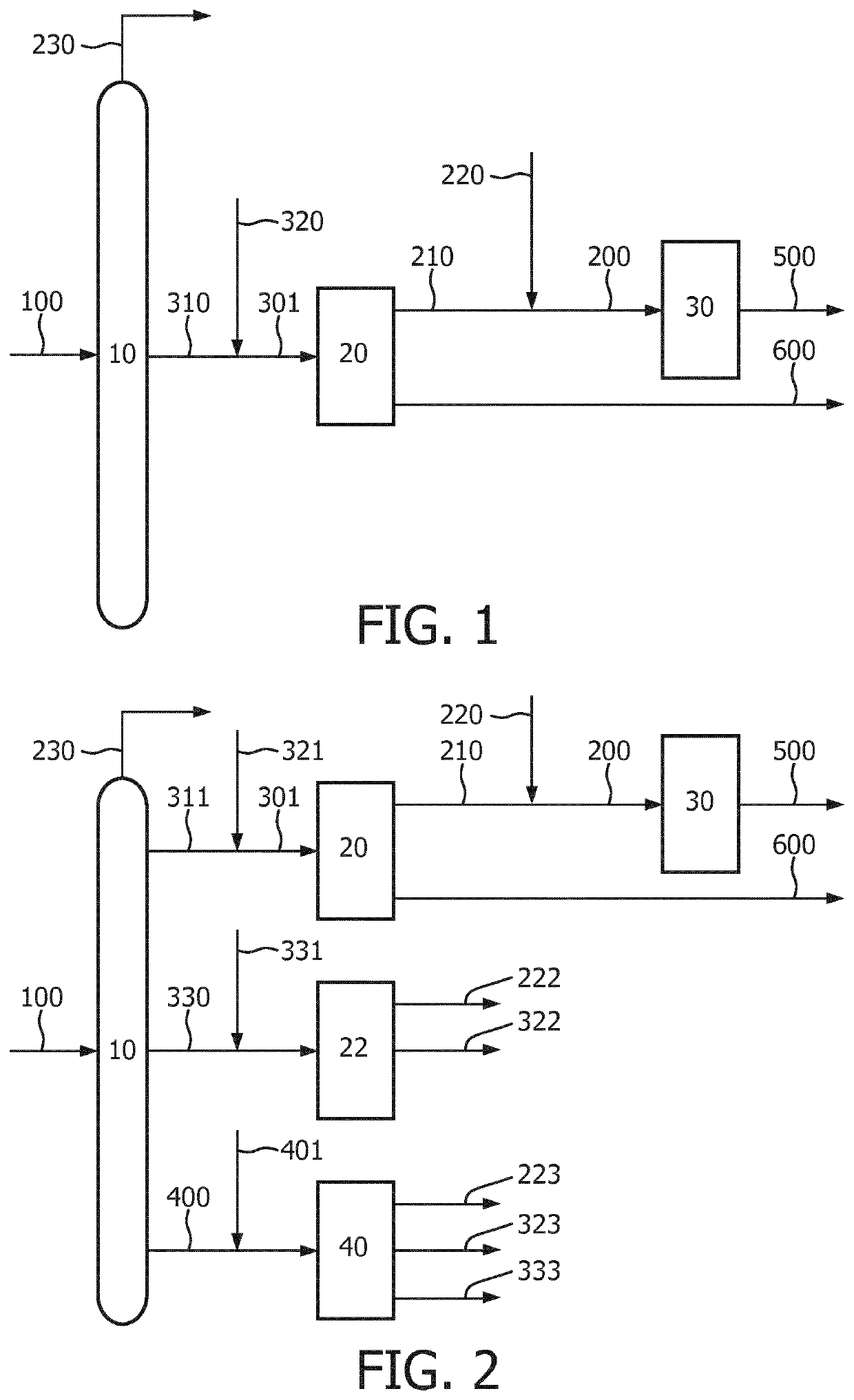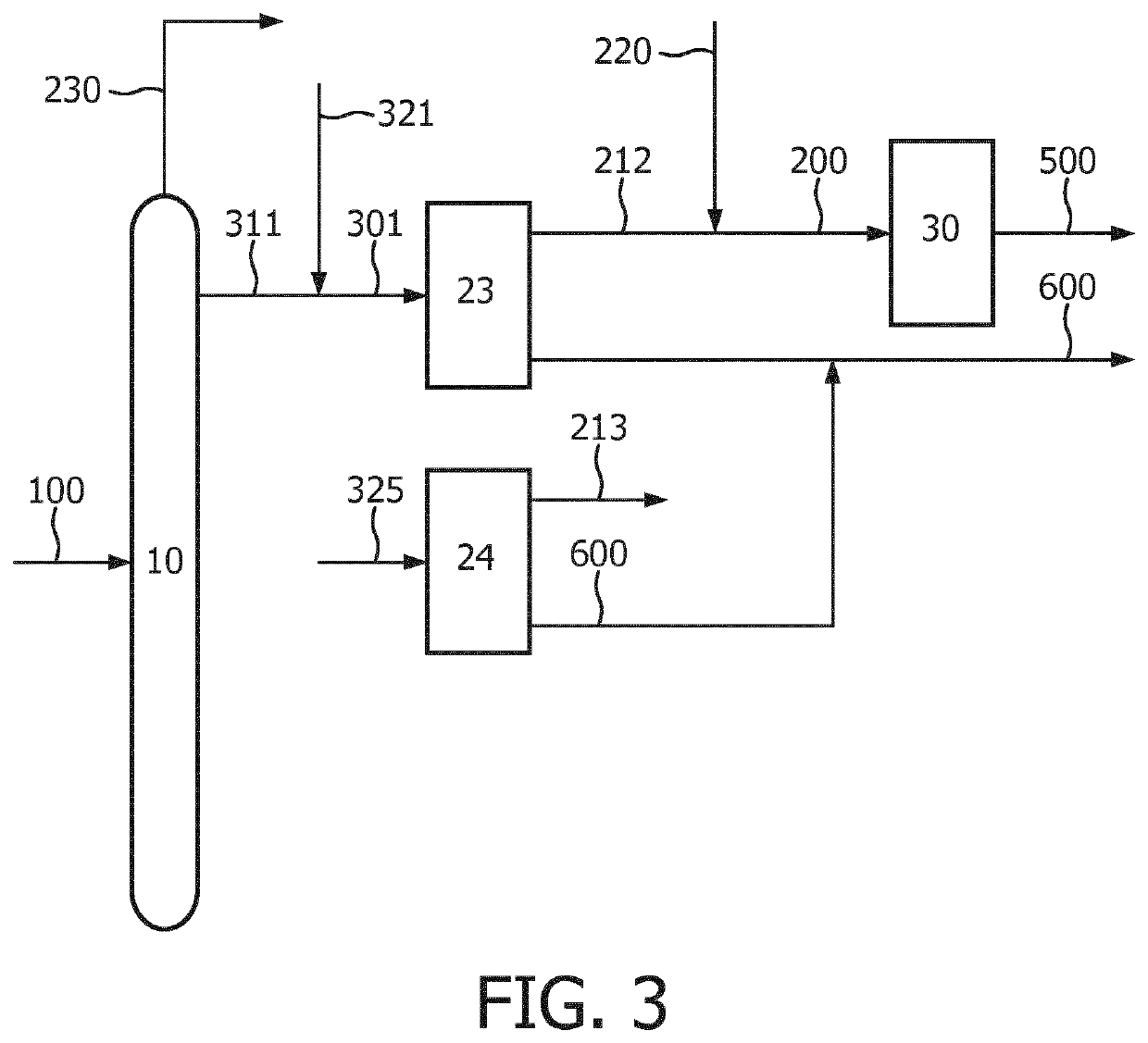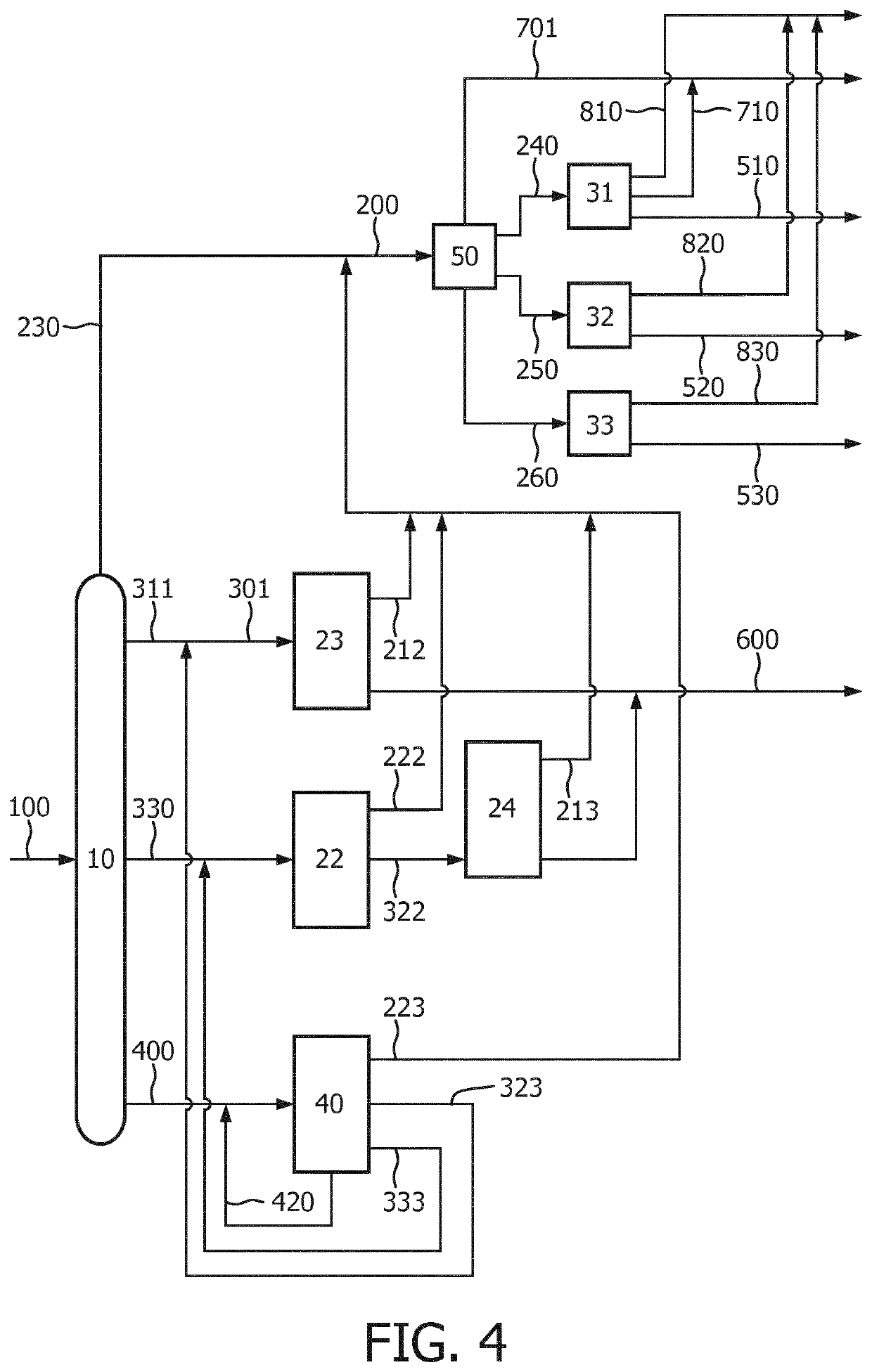Process and installation for the conversion of crude oil to petrochemicals having an improved carbon-efficiency
a technology of petrochemicals and conversion processes, applied in the direction of hydrocarbon oil treatment products, sustainable manufacturing/processing, energy input, etc., can solve the problems of low carbon efficiency of conversion of crude oil into petrochemicals, and the conventional way of integrating oil refinery operations with downstream chemical plants, etc., to achieve the effect of improving carbon efficiency and increasing production of petrochemicals
- Summary
- Abstract
- Description
- Claims
- Application Information
AI Technical Summary
Benefits of technology
Problems solved by technology
Method used
Image
Examples
example 1
[0193]Example 1 is identical to the Comparative Example except for the following:
[0194]First, the naphtha fraction of the distillation is converted in a FHC unit to yield BTX (product) and LPG (intermediate). This LPG is separated into ethane-, propane- and butane fractions which are steam cracked.
[0195]Furthermore, the kerosene and gas oil fractions (cut point 350° C.) are subjected to aromatic ring opening that is operated under process conditions to maintain 1 aromatic ring. The effluent from the aromatic ring opening unit is further treated in a GHC unit to yield BTX (product) and LPG (intermediate). This LPG is separated into ethane-, propane- and butane fractions which are steam cracked.
[0196]Table 1 as provided herein below displays the total product slate from the steam cracker (cracked lights, naphtha and LPG) and from the FHC and GHC unit (BTX product) in wt % of the total crude. The table also contains the remaining atmospheric residue fraction.
[0197]For Example 1 the car...
example 2
[0198]Example 2 is identical to Example 1 except for the following:
[0199]First, the resid is upgraded in a resid hydrocracker to produce gases, light-distillate and middle-distillate. The gases produced by resid hydrocracking are being steam cracked. The light-distillate produced by resid hydrocracking is being fed to the FHC unit to yield BTX (product) and LPG (intermediate). This LPG is separated into ethane-, propane- and butane fractions which are steam cracked. The middle-distillate produced by resid hydrocracking are subjected to aromatic ring opening that is operated under process conditions to maintain 1 aromatic ring. The effluent from the aromatic ring opening is further treated in a GHC unit to yield BTX and LPG. This LPG is separated into ethane-, propane- and butane fractions which are steam cracked.
[0200]Furthermore, the heavy part of the cracker effluent (C9 resin feed, cracked distillate and carbon black oil) is being recycled to the resid hydrocracker. The ultimate ...
example 3
[0203]Example 3 is identical to Example 2 except for the following:
[0204]The propane and butane from the ARO-GHC units are not being steam cracked but being dehydrogenated into propylene and butene (with ultimate selectivities of propane to propylene 90%, and n-butane to n-butene of 90% and i-butane to i-butene of 90%).
[0205]Table 1 as provided herein below displays the total product slate from the steam cracker (cracked products of lights, naphtha and LPG) and from the FHC and the GHC unit (BTX product) in wt % of the total crude. The product slate also contains the pitch of the hydrocracker (2 wt % of the crude).
[0206]For example 3 the carbon efficiency is 93.5 w-%.
[0207]
TABLE 1ComparativeExampleExample 1Example 2 Example 3 Petrochemicals (wt-% of crude)Ethylene15% 22% 43% 21% Propylene8%6%11% 41% Butadiene2%1%2%0%1-butene1%0%1%8%Isobutene1%0%1%2%Isoprene0%0%0%0%CPTD1%0%0%0%Benzene4%3%5%4%Toluene2%5%9%8%Xylene1%3%5%5%Ethylbenzene1%0%0%0%Other components (wt-% of crude)hydrogen1%1%...
PUM
| Property | Measurement | Unit |
|---|---|---|
| boiling point | aaaaa | aaaaa |
| boiling point | aaaaa | aaaaa |
| boiling point | aaaaa | aaaaa |
Abstract
Description
Claims
Application Information
 Login to View More
Login to View More - R&D
- Intellectual Property
- Life Sciences
- Materials
- Tech Scout
- Unparalleled Data Quality
- Higher Quality Content
- 60% Fewer Hallucinations
Browse by: Latest US Patents, China's latest patents, Technical Efficacy Thesaurus, Application Domain, Technology Topic, Popular Technical Reports.
© 2025 PatSnap. All rights reserved.Legal|Privacy policy|Modern Slavery Act Transparency Statement|Sitemap|About US| Contact US: help@patsnap.com



